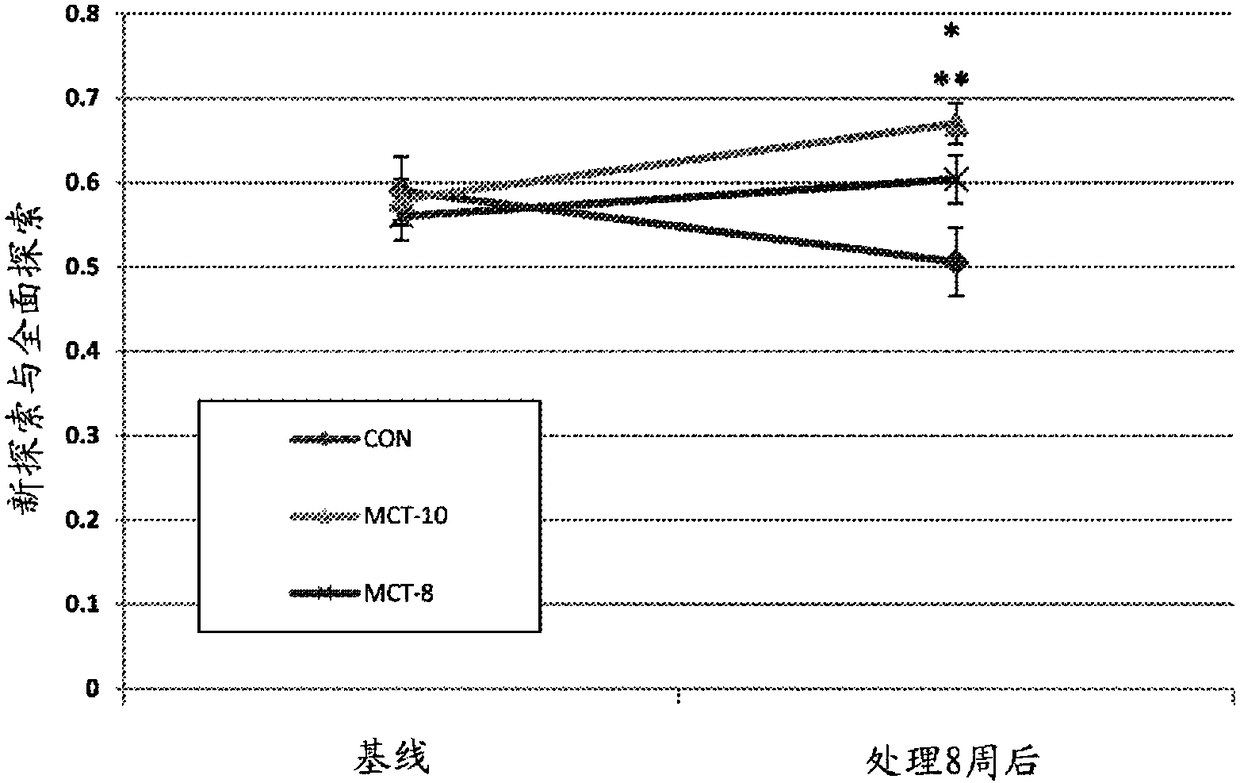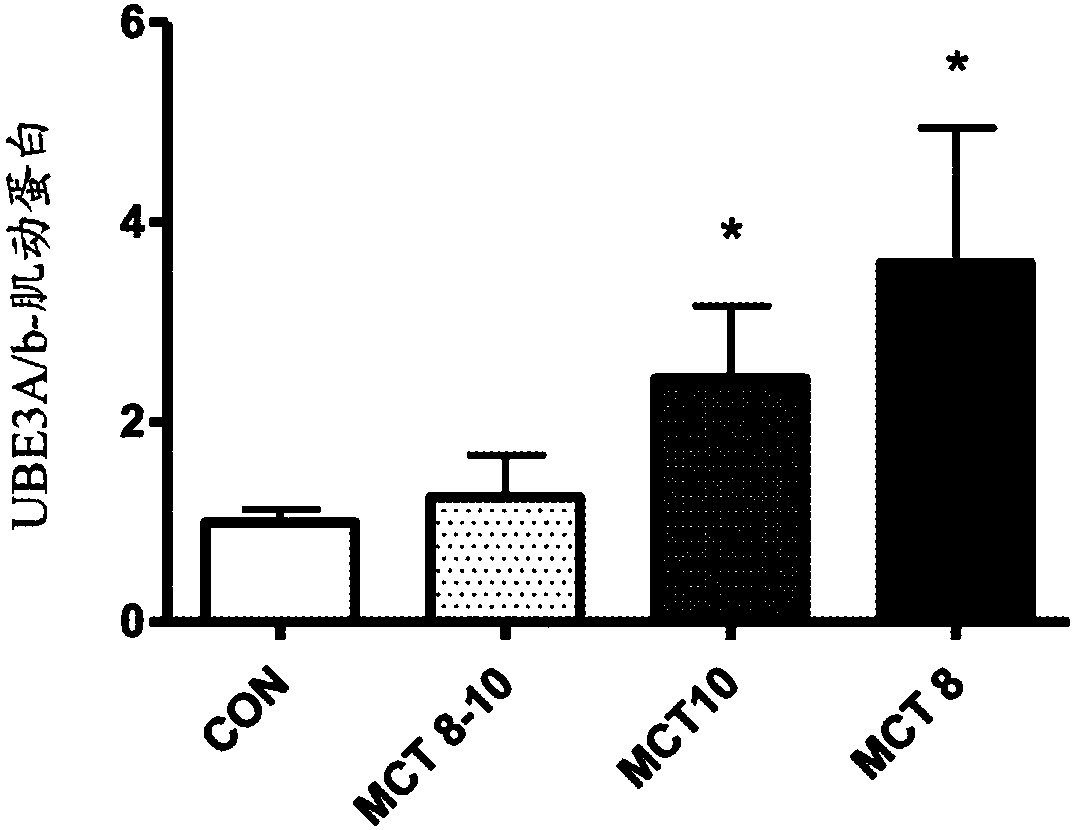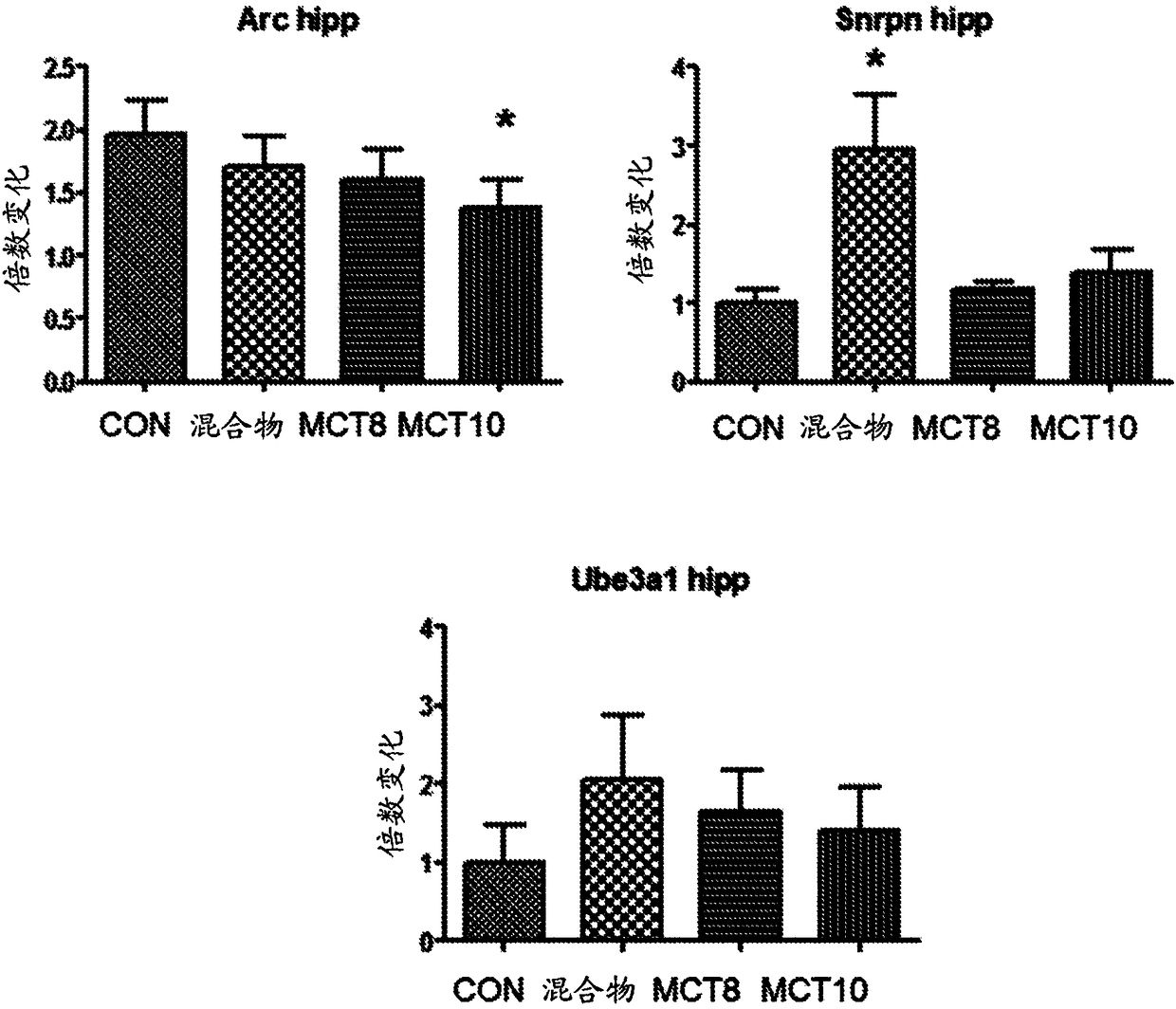Method for improving cognition
A technology for cognitive impairment and use, applied in the direction of anhydride/acid/halide active ingredients, ester active ingredients, nervous system diseases, etc., can solve the problem of no effective treatment for diseases, reduce incidence and improve cognition Effect
- Summary
- Abstract
- Description
- Claims
- Application Information
AI Technical Summary
Problems solved by technology
Method used
Image
Examples
Embodiment 1
[0168] Materials and methods
[0169] animal
[0170] 21-month-old male Wistar rats were ordered from Janvier Labs (France) and acclimatized at the facility for 7 days. During this period, they were housed in pairs in cages.
[0171] After the acclimatization period, the rats were randomly divided into four groups according to cognition and body weight. Baseline cognition was tested by social cognition using the protocol described below.
[0172] Rats were housed individually in standard cages with free access to food and water and maintained under a 12-hour photoperiod at a temperature of 20°C-24°C and a relative humidity of 50%-60%. Rats were fed a diet of 5% medium chain triglycerides (MCTs): caprylic triglyceride (C8), capric triglyceride (C10), 40:60 of C8 and C10 triglycerides via specially formulated animal common chow Combination or control (5% sunflower oil) for 8 weeks.
[0173] social cognition
[0174] Rats were tested for behavioral effects of MCT by a...
Embodiment 2
[0194] Materials and methods
[0195] animal
[0196] 15-month-old male Wistar rats and 6-month-old male rats were ordered from Janvier Labs (France) and acclimatized at the facility for 7 days. During this period, they were housed in pairs in cages.
[0197] After the acclimatization period, the rats were randomly divided into four groups according to cognition and body weight. Baseline cognition was tested by social cognition using the protocol described in Example 1.
[0198] Rats were individually housed in standard cages with free access to food and water, and maintained under a 12-hour photoperiod at a temperature of 20°C-24°C and a relative humidity of 50%-60%. Rats were given a diet of 5% medium-chain triglycerides (MCTs): caprylic triglyceride (C8), capric triglyceride (C10), a 50:50 combination of C8 and C10 triglycerides or control (sunflower oil) , for 8 weeks.
[0199] result
[0200] Based on comparisons of object cognition at baseline and after chron...
Embodiment 3
[0203] UBE3A expression was analyzed in immature mice exposed to a caprylic acid homogeneous triglyceride (MCT8) diet during gestation and weaning (via nursing).
[0204] Materials and methods
[0205] animal
[0206]Female C57 mice were mated and pregnancy followed by vaginal smears. MCT8 was mixed in animal normal diet (1.5%) and administered to pregnant female mice between gestation day 10 and postpartum day 28, while pregnant mice received normal diet supplemented with 1.5% sunflower oil (control ).
[0207] On postnatal day 28, brains and livers of pups were collected, fixed, frozen, and processed for UBE3A expression.
[0208] To assess the effect of the treatment on cognitive performance, a subset of mice was tested on postnatal day 60 using the Morris water maze task. The equipment used for behavioral testing consisted of a gallon jug and a platform placed in one of the quadrants. Fill the jar with warm water (24°C) to make it opaque. Video cameras record ani...
PUM
 Login to View More
Login to View More Abstract
Description
Claims
Application Information
 Login to View More
Login to View More - R&D
- Intellectual Property
- Life Sciences
- Materials
- Tech Scout
- Unparalleled Data Quality
- Higher Quality Content
- 60% Fewer Hallucinations
Browse by: Latest US Patents, China's latest patents, Technical Efficacy Thesaurus, Application Domain, Technology Topic, Popular Technical Reports.
© 2025 PatSnap. All rights reserved.Legal|Privacy policy|Modern Slavery Act Transparency Statement|Sitemap|About US| Contact US: help@patsnap.com



